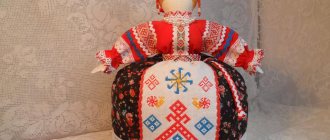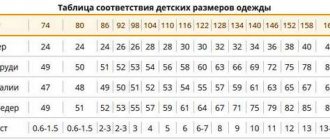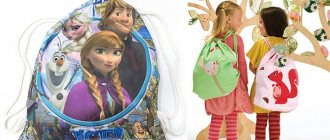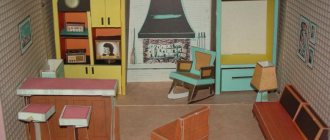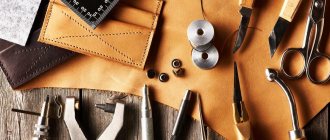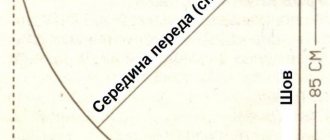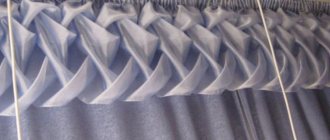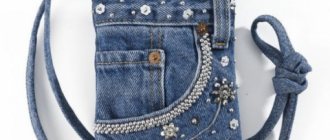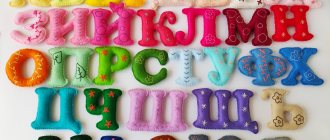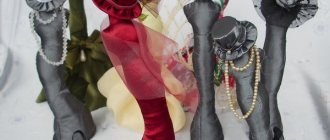There is hardly a single craftswoman who has not heard anything about this famous doll and would not like to make it. But lack of information about new sewing techniques can be a barrier to creativity. This article describes in detail how to approach the implementation of the idea of sewing an unusual doll, and provides a step-by-step “Tilda” master class, which even beginners can handle.
Tilda cannot be confused with other toys
History of origin
An unusual doll called Tilda was invented by a girl from Norway, Toni Finnanger. The creator of the original toy worked as an illustrator and was fond of needlework. Her grandmother instilled in her a love of creativity and patchwork.
Having fulfilled the next contract signed with the publisher for drawings for books, Toni began making toys in a rustic style. She came up with a name for her doll based on the first letter of her own name. The figurine of a woman dressed in colorful boho dresses has become popular all over the world.
Toni published two beautiful books about creating a Tilda doll with her own hands and organized a business selling her products. Every year, hundreds of thousands of toys made from original designs are sold all over the world.
For reference! The artist who invented the doll does not object to the creative endeavors of numerous imitators.
Specifics of Tilda dolls
A Norwegian artist has created a business by designing a handmade doll.
Toys made in the style of Tilda have a number of distinctive features, thanks to which they cannot be confused with any others. These textile dolls are characterized by the following features:
- The figurine itself, clothes and all accessories for it are made from natural high-quality fabrics based on cotton and linen fibers.
- The color palette of materials is pleasing to the eye. Most often these are delicate pastel colors and pure natural shades.
- Some incompleteness of details, expressed in the lack of drawing of facial features.
- Quite peculiar proportions. Tilda's body is usually quite dense, thick at the waist, and the limbs are narrower and elongated, although there are exception models.
- A large number of small details and accessories, thought out and executed very carefully.
The creator gave her doll an independent and cheerful character. The details that complement Tilda's image combine the incongruous: a wedding dress and a basket, lace stockings and rubber boots. Moreover, they are all executed perfectly, without the slightest carelessness.
You might be interested in How to properly embroider on knitted items
What other Tilda dolls can you make?
Here is a detailed master class on making the so-called Tilda-Splyushka. Her arms are sewn on with the sleeves already on them, meaning she won’t be able to remove the clothes. And here the hair is attached not at the parting, but at the sides, since the top of the head is covered with a cap.
Dolls depicting people are considered classics. But there are also many options for fairy-tale characters and animals. In this video, a craftswoman makes a unicorn. The torso and limbs look the same as those of a regular doll, but the head is different.
Tilda animals are usually completely different from classic dolls. But the style remains: the same fabric, no mouth, small eyes. Here is a good tutorial on sewing a mouse:
Here's how to make a Tilda hare. Its peculiarity is its long flat ears and paws. Thanks to the latter, the toy can be placed on the edge of a table or windowsill.
Here's how to sew a Tilda dog:
There are also completely unusual toys that differ from the rest. Like, for example, these geese:
Varieties
All dolls using the Tilda technique have similar features.
Tilda-Matilda can be created not only by hand or by machine. Craftswomen, based on Toni Finnenger's idea, have developed many patterns and patterns for crochet hooks with knitting needles. You can find many Tilda MKs in the public domain, with detailed descriptions of sewing and knitting the following toy options:
- mother with a boy or girl;
- grandmother with grandfather
- bather;
- teacher with glasses;
- cook.
There are such unusual interior dolls as a snowman or an angel.
For reference! In addition to the traditional female figurine, a Tilda-style toy can be made in the form of a hare, cat, rat or mouse, snail, bear and any other animal.
Tilda animals are as cute as the original doll
Tilda doll patterns
Angels and fairies are a very popular theme for gentle Tilda.
Tilda is a flower angel , Tilda is a sewing angel, an angel of home comfort, a sleepy angel... Tilda will turn into an angel, you just have to sew her beautiful wings. And Tilda is an angel and you will sew her wings using the pattern below. Tilda doll life-size patterns for free.
Tilda Angel pattern.
The pattern can be printed on a printer or transferred from the monitor screen to paper.
Also, in the summer, I would like to sew Tilda - the Beach Girl, in a cute swimsuit and a headband. It couldn’t be easier to do this, since there is practically no costume, we sew it together with the pattern and sew on a small skirt.
Pattern Tilda the Beach Girl
From the pattern presented below you can sew Tilda the witch, Tilda the schoolgirl, Sleepy angel, Santa Claus. The nose needs to be carefully filled with padding polyester so that it stands out on the face.
Tilda schoolgirl doll pattern.
Another angel pattern, only the wings are smaller here. The basis for Tilda - a coffee angel, a country angel, etc. according to your imagination. Tilda patterns in full size
Pattern Tilda Angel
Classic Tilda - sophisticated, slender. The following pattern is suitable for Tilda in a coat, a sweater, or a beautiful princess dress.
Pattern Tilda Princess
Dress pattern for Tilda
The following Tilda pattern is suitable for Scops Owl, Santa Claus.
Pattern of the Tilda Sleepy Angel doll
Tilda Splyushka doll pattern
Cute Pinocchio also comes in Tilda style.
Pattern Tilda Pinocchio
Pattern of Tilda Bigfoot
Another sweet angel
Angel toy pattern
Pattern of Tilda in pajamas
Plump Tilda girls in cute swimsuits are also popular. Their skin was slightly tanned. See how to dye fabric for Tilda's skin here.
Pattern Tilda bather.
How to choose the right fabric
To sew a Tilda toy, it is important to choose the right materials. The body is made of fabrics with a dense and smooth structure. It is better to give preference to textiles that are as close in shade to the color of human skin as possible. If you are sewing a figurine of a mouse or a bunny, then here too you should choose a color of the fabric that is close to natural.
The most commonly used fabrics are:
- various types of cotton and linen fabric;
- knitwear;
- gabardine;
- fleece
Clothes can be sewn from absolutely any materials you like. Beginners may not have to specifically purchase pieces of expensive fabric to make a doll, but rather sew an outfit from scraps that they have on hand.
The only thing that can disturb the harmony of the outfit is a large pattern. Although for Tilda of a large size this may not be a problem.
Fabrics with small prints are used for clothing
Where to begin? From a whale!
All Tilda toys are made according to the same principle. If you watch the training master class at least once, then by analogy you will be able to sew any product in this style.
First of all, you will need a pattern. All patterns are quite simple and understandable. They can be printed by choosing the size you need (if you want very small animals, they can serve as angels and talismans, and larger animals will be wonderful toys or interior decoration) and transferred to fabric. Remember that tildes are sewn only from natural fabrics.
All parts of the product, as a rule, are made separately and then connected. The only exception would be a whale (and toys that are made according to the same principle). In the case of a marine mammal (this could be a large blue whale or a sperm whale), the figure on the fabric will be solid, as will the pattern. Then you only need to sew on the fins if you want your whale to keep its balance well while lying on its tummy.
INTERESTING: Lovebird tildes: hares and angel tildes
Remember that the fabric must be folded in half with the right sides facing inward. When cutting out, remember to leave a small seam allowance. Do not sew the pieces all the way, because you will need a hole through which you will add stuffing. You can use any filler: cotton wool, padding polyester, holofiber. To ensure that the filler is evenly distributed inside, take a special wooden stick or knitting needle. When you're done with the stuffing, you can sew up all the holes.
To finish the whale, paint its eyes with black acrylic paint (you can also embroider or glue beads, sew on buttons), and also sew its mouth and tail with a simple hand stitch (needle back).
What else will you need for work?
Since the distinctive feature of the tilde is the presence of various small parts and accessories, to create them you will need all kinds of sewing accessories. There is room for imagination here. In your work you can use:
- lace;
- ribbons;
- beads and seed beads;
- wire;
- cords;
- buttons.
To create voluminous hair, you can purchase ready-made artificial strands or make them yourself from felting wool or regular knitting threads.
The fittings used are delicate, natural tones.
Pattern of a life-size doll
The classic height of the famous toy, according to the author's idea, is approximately 40-50 cm, but there are no clear rules on this score for a long time. The Tilda doll can be very small, a little larger than the palm of your hand, or large, the size of a child.
You might be interested in: What are the different types of thread embroidery on fabric by hand?
In order for a female figurine using this technique to be life-size, it is enough to place all the details of the pattern - the body with the head, the arm and the leg - on an A4 sheet. If the drawing is too small, then it is simply stretched to the edges of the page and printed in this form.
Tilda's body can be sewn along the side seams or along the center line
Origin of the rosy toy
Tilda doll was born quite recently. The first toy was invented by the Norwegian Tonne Finanger, who almost accidentally made an unusual rag doll. Calling her Tilda, the girl presented her creation to the world. And quite unexpectedly it found a strong response in the world of handicrafts.
The name Tilda was firmly attached to subsequent toys that Toney created based on the same sketch. Long-armed and modest dolls have become popular and are growing in popularity.
The craftswoman opened mass production, and homemade toys made by needlewomen from all over the world began to follow suit.
Today, tildomania has taken over the whole world. In addition to girl angels, handmakers sew plush hares, cats and bears. But no matter what role Tilda appears in, seamstresses follow the mandatory rules for sewing a fashionable toy.
Classic signs of Tilda:
- Dark skin. The first toy was a little "tanned". Over time, the rule became stronger. Now all Tildas can boast of dark skin, which is made from fabric dyed in characteristic shades.
- Understatement. Another important feature is the modest expression of the face and dot eyes. The dolls' faces are never drawn in detail. It should only be intended. It is generally accepted that different people see different emotions on the face of the same doll.
- Long arms and legs. The characteristic lankyness is played up in toys of any type. Angels and animals have disproportionately large paws, which gives the style a special, recognizable charm.
- Outfits. Tilda style says that clothes should be as simple as possible. The dolls are dressed in pajama fabrics, rustic overalls and light sundresses. The fabric for clothing should be simple and natural. Small floral designs are welcome.
- Padding. Rag toys are stuffed with high-quality material. The character's torso should be filled tightly. The limbs are light and fluffy.
- Subject. Most dolls are given a specific style when sewing. There are Farmer Tildas, Home Angels, Scops Owls and Wedding Toys. “Pregnant” dolls have also become fashionable today.
- Tilda's wings have a symbolic meaning. She won’t be able to fly on miniature wings, but she can easily amuse her household.
